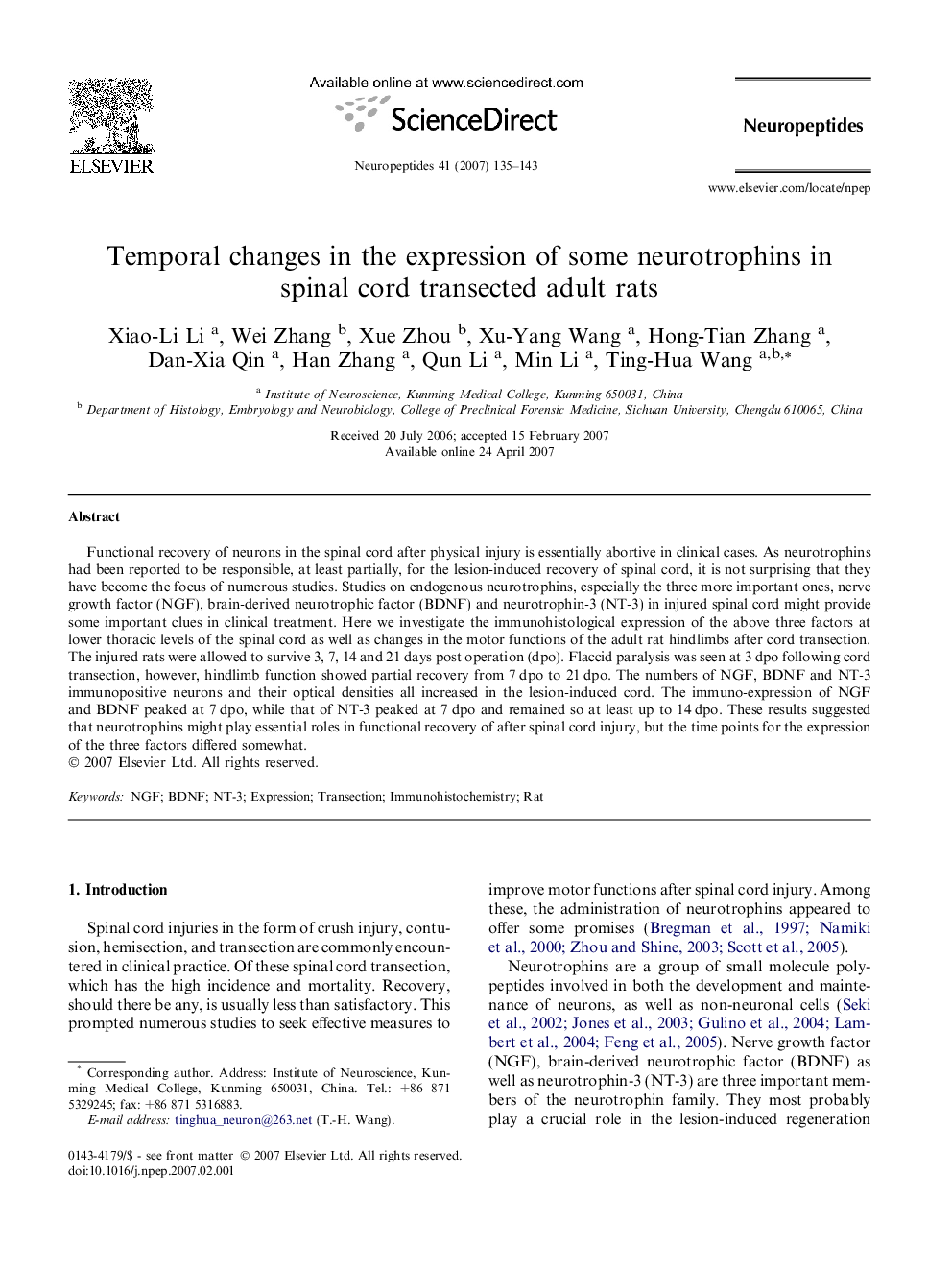| Article ID | Journal | Published Year | Pages | File Type |
|---|---|---|---|---|
| 2808667 | Neuropeptides | 2007 | 9 Pages |
Abstract
Functional recovery of neurons in the spinal cord after physical injury is essentially abortive in clinical cases. As neurotrophins had been reported to be responsible, at least partially, for the lesion-induced recovery of spinal cord, it is not surprising that they have become the focus of numerous studies. Studies on endogenous neurotrophins, especially the three more important ones, nerve growth factor (NGF), brain-derived neurotrophic factor (BDNF) and neurotrophin-3 (NT-3) in injured spinal cord might provide some important clues in clinical treatment. Here we investigate the immunohistological expression of the above three factors at lower thoracic levels of the spinal cord as well as changes in the motor functions of the adult rat hindlimbs after cord transection. The injured rats were allowed to survive 3, 7, 14 and 21Â days post operation (dpo). Flaccid paralysis was seen at 3Â dpo following cord transection, however, hindlimb function showed partial recovery from 7Â dpo to 21Â dpo. The numbers of NGF, BDNF and NT-3 immunopositive neurons and their optical densities all increased in the lesion-induced cord. The immuno-expression of NGF and BDNF peaked at 7Â dpo, while that of NT-3 peaked at 7Â dpo and remained so at least up to 14Â dpo. These results suggested that neurotrophins might play essential roles in functional recovery of after spinal cord injury, but the time points for the expression of the three factors differed somewhat.
Related Topics
Life Sciences
Biochemistry, Genetics and Molecular Biology
Endocrinology
Authors
Xiao-Li Li, Wei Zhang, Xue Zhou, Xu-Yang Wang, Hong-Tian Zhang, Dan-Xia Qin, Han Zhang, Qun Li, Min Li, Ting-Hua Wang,
